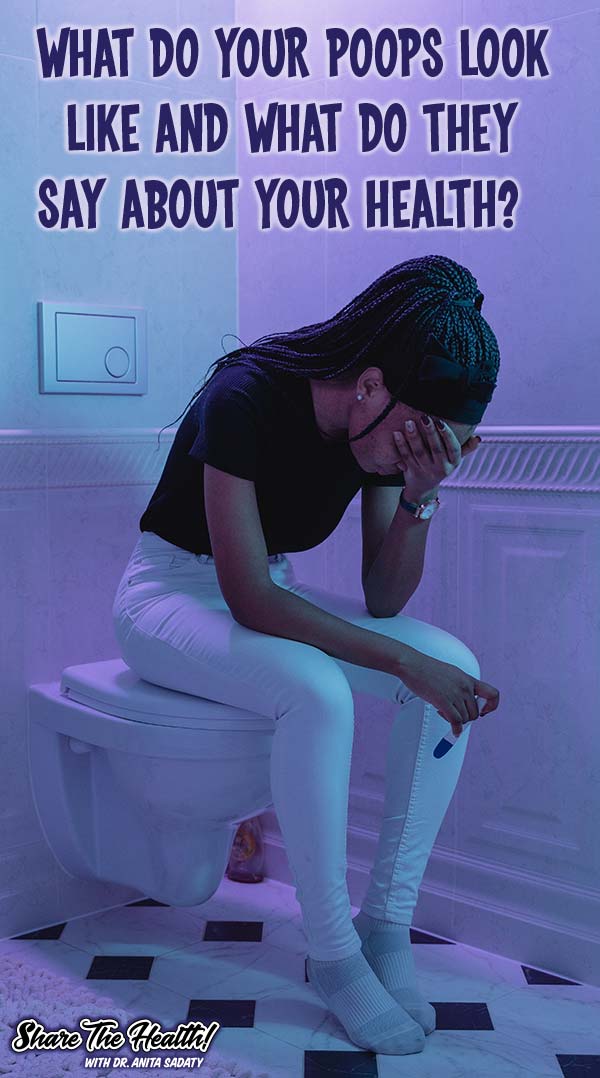Do You Have “A-List” Poops?
What do your poops look like and what do they say about your health?
[The following information is Rated PG] The Bristol Stool Chart shows you the 7 most common types of poops and what they mean for your gut health. (Because we medical professionals have nothing better to do than come up with embarrassing charts like these to whip out at a moment’s notice.)
If you aren’t on the A-list, it may be a good idea to discuss this with someone who cares. Like a 7 year-old boy for starters. Then maybe a doctor. Usually only New York functional integrative doctors care about that sort of thing, but give your bloke or blokette a try. If they tell you to take Miralax or eat more fiber then they aren’t up on the whole gut-bacteria-health connection.
What type of stools are best?
Read through and find out who the A-listers are at the “end” or Click here to see the Bristol Stool Chart.

Type 2: Sausage-like but lumpy. This is a combo of Type 1 stools stuck into a single mass and lumped together by fiber and bacteria. (I think I’m making myself nauseated.) This type is the most destructive type by far because its size can exceed the normal opening of the “exit” door. It can cause extreme straining and lead to anal fissures, hemorrhoidal prolapse, or diverticulosis. (This just keeps getting better and better.) Adding fiber to try to empty these stools is dangerous, because the fiber has no place to go, and may cause worsening problems.
Type 3: Like a sausage but with cracks in the surface. This form has all of the characteristics of Type 2 stools, but moves faster through the colon, between one and two weeks. Typical for “run of the mill” constipation and IBS. Straining is required. All of the adverse effects typical for Type 2 stools are likely for type 3, especially the hemorrhoid issues.
Type 4: Like a sausage or snake, smooth and soft This form is normal for someone pooping once daily. The larger diameter suggests a longer transit time or a large amount of fiber in the diet.
Type 5: Soft blobs with clear-cut edges considered by some to be ideal. It is typical for a person who poops twice or three times daily, after major meals. (I thought only puppies did this, but apparently you can too!!!)
Type 6: This form is close to the margins of comfort in several respects. And no one wants THAT! First, it may be hard to control the urge, especially when you don’t have immediate access to a bathroom. Second, it is a rather messy affair to manage with toilet paper alone. These kind of stools may suggest a slightly hyperactive colon (fast motility), or can indicate a hypersensitive personality prone to stress, too many spices, drinking water with a high mineral content, or the use of osmotic (mineral salts) laxatives.
Type 7: Watery, no solid pieces This, of course, is diarrhea and is generally NO BUENO.
And the award goes to…….. Type 4, for their performance as “most likely to glide out without any fuss.”
These type of stools are the best for a few reasons:
- The feeling you need to go is definite but not irresistible
- Once you sit down on the toilet there is no delay
- No conscious effort or straining is needed
- The stool glides out smoothly and comfortably
- Afterwards there is only a pleasant feeling of relief. Like a day at the spa!
If you aren’t finding that Type 4 is your stool, then speak with your healthcare provider to see what this may mean for and what you can do. If your provider tells you to just treat the symptoms with fiber or Miralax, then they may not be up on the whole gut-health-poop-live your best life research.
Please Share the Health if you liked what you read!!!
For more information about my wellness programs and my practice, check out my website drsadaty.com. Hey Look! You are already here…
Ready for the legal disclaimer? Information offered here is for educational purposes only and does not constitute medical advice. As with any health recommendations, please contact your doctor to be sure any changes you wish to consider are safe for you!
My favorites are Jason’s Cucumber deodorant and Welda Lemon! Thanks so much for bring awareness to toxic load of something we use everyday. Next time we are in yoga together we can test whose works better!
Tried Jason’s. Good to have in the rotation.
Anita, these tips are both fabulous and witty! Thank you for the information and the belly laughs. I’ll be reading my deodorant label and switching ASAP. And as for the “scoop on poop”, you should write a book!
All I need is a catchy title….hmmmmm
I am loving these tips! Please continue the good work. Thanks for the laughs.
thank you, will do!!!